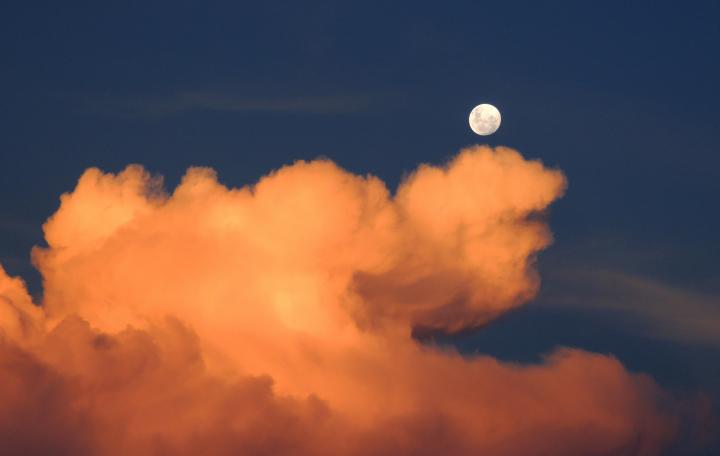
Shine On, Harvest Moon! Facts and Folklore
ADVERTISEMENT
The Harvest Moon
Tonight there is a lovely Harvest Moon, and I have been watching it from the time it started to rise over the far hills. It was huge and red and turned to orange and then gold as it rose higher in the sky and now it's a pale yellow. What a wonderful blessing God has created for my tired eyes to see.
Watching the Harvest Moon has brought one of my favorite memories to mind. I can hear the singing and laughter as if it all took place yesterday. I was with my parents at my aunt and uncle’s cottage on the lake and we had a bonfire and my father played some kid songs for us on his guitar. I especially like "I've Been Working on the Railroad" and I sang with much gusto.
After all the kids were inside and either playing cards and board games or telling ghost stories, the adults had their turn at the bonfire and singing. Mom and dad, Aunt Florence and Uncle Milt and Aunt Bet and Uncle Crit were all singing and laughing. They sang "Shine on Harvest Moon", "Now Is the Hour", and "Down by the Old Mill Stream" and a bunch more.
Many years have passed since then and mom, dad and all the aunts and uncles are gone from this life. Their singing and laughter remains with me and sometimes the sweetness and sadness bring tears to my eyes. How I miss them and how I miss those wonderful, carefree days I had as a young child.
Of course, I grew and moved on with life, but those dear people are part of me, who I am and what I believe. They remain with me and I can see and hear them in my mind and think how perfect that time in my life was.
Moon was shining a light only on my back yard , like a flashlight shining down on earth Wow.Full moon white colored . September 9 th thanks.
I love the Old Farmer's Almanac! My grandmother always had a copy on the table beside of her chair. We only got to visit with her a couple of times a year but I would read it cover to cover! I learned so much from it. I am wondering why you have a box "Warning, scientific explanation below"? Thank you!
Ed,
Thank you for reading our almanac! We’re happy to hear that you’ve enjoyed its contents. That warning was our tongue-in-cheek attempt at humor!
This year Halloween fell on a weekend.
Time to tie the stalks and sell our gourds and pumpkins.
The bees are on the swarm for the end of their season.
I can remember many a night on the farm doing beans we would talk about the lore of the harvest moon. Sometimes beans were already done and we were starting corn which could run til the wee hours of the morning. But we always had that full moon. Those were good times with good people and hard work. You knew what a long days work was when it was over, until the next day. then you started up again.
Love this stuff, Large family Farm Northern Kentucky.
This is my favorite time of year and I have always noted the "Moon" in my life.
While I understand the relevance of the harvest moon, I did not know that it was at least as relevant to the Chinese (really Duhhhh).
We (Westerners) have a tradition of names, What is the name tradition for the Chinese, "Moons"?
The details of the Harvest Moon was brought to my attention late yesterday. Opening my back door I noticed the moon positioned in the northeast with a powerful illuminiation. As I returned to my computer and telephone conversation I mentioned how beautiful the moon was shining. At that premise moment, the person on the other end of the phone shared with me that it was the Harvest Moon. I had never heard of the Harvest Moon, but I was instructed to make a wish and several wishes. Instead, I shall pray as ask God to release blessings, miracles, and healings categorically into my life. Afterall, it was God that created the moon; Genesis 1:14,16, Psalm 8:3, and Isaiah 30:26.
So the harvest moon would mark the time between it and the fall equinax (Sept. 23 ?) for harvesting crops. Is this because there is not enough daily light to grow efficiently anymore or because the moon offers the ability to work late into the night and you hope your crops are ready to harvest?
I learned about whippoorwills from my father playing guitar (My Blue Heaven), and it's how I came to know about harvest moons, too! => Leon Redbone - Shine On Harvest Moon













